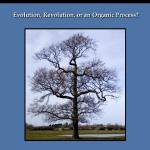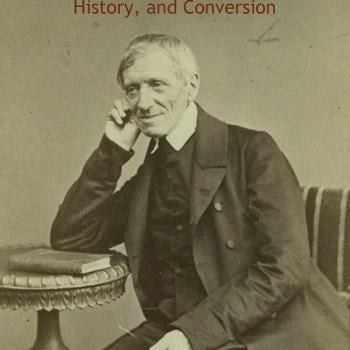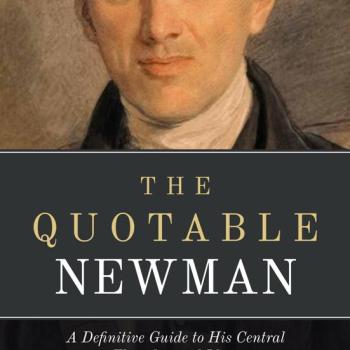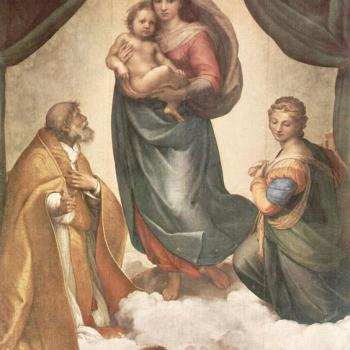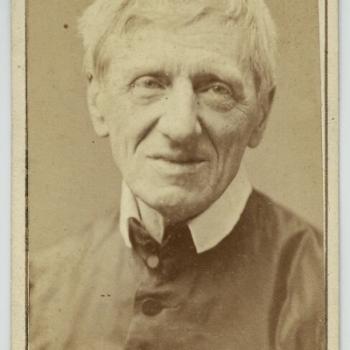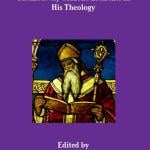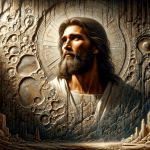
Blessed John Henry Cardinal Newman: portrait by Sir John Everett Millais (1829-96) [public domain]
***
[from the initial 750-page version of my first book, A Biblical Defense of Catholicism]
Robert Hugh Benson
***
Life is the principle of growth, and growth the evidence of life. A statue may be more perfect than a body in grace and proportion, yet it does not grow, and therefore is not alive . . . To compare the Church to a body or a seed, and to deny it the power of growth and expansion, is to utter a contradiction in terms . . . to rob the metaphors of Christ and His apostles of their essential meaning . . .
For them the Church of Christ is a statue carved by the hand of God, polished possibly by workmen of the subapostolic age, which it is their duty to keep undefiled. Lichens encroach upon it by lapse of time . . . and these must continually be removed . . . .
As for the theory that the Church is alive, but reached its full growth about the end of the first, 2nd, 4th, or 6th century . . . these are purely arbitrary points . . . It is ridiculous to say that St. Paul looked forward to the end of the 6th century as the culmination of the measure of the stature of the fullness of Christ . . . Any such view is indeed to make null the word of God by human traditions that have not even common sense to recommend them . . . It is as arbitrary as to say that the perfection of a child’s growth is reached at the age of 14 . . .
*
Yet . . . there is another serious accusation brought against the Roman Church. What of all those foreign bodies that she has incorporated into her system? What of incense . . . Transubstantiation . . . canonization . . . and all the rest? . . . “Exactly”, cries the Catholic voice . . . We confess frankly that we assimilate exterior things; but so do the acorn and the child . . . Arius complained that a new phrase was added to the old Creed when Christ was called “of one substance with the Father.” “You are adding to the faith,” he cried, . . . “it is I, then, who am the old Catholic, it is you who are innovators and heretics.” “It is not so,” answered the Church. “I incorporate the Greek word to express myself more fully; as an acorn incorporates earth to declare the glorious life that is hid within itself; as one day I may declare Mary immaculate, and the Pope infallible. First the seed, then the fibre, then the sapling, then the tree.” (The Religion of the Plain Man, Long Prairie, Minnesota: Neumann Press, 1906, 56-57, 60-62)
*
*
James Cardinal Gibbons
***
To show that this kind of progress is to be admitted only two things are to be proved: l. That some divinely revealed truths should be contained in the Apostolic teaching implicitly, less clearly explained, less urgently pressed. And this can be denied only by those who hold that the Bible . . . is clear in every part, and could be readily understood by all from the beginning . . . 2. That the Church can, in process of time, as occasions arise, declare, explain, urge. This is proved not only from the Scriptures and the Fathers, but even from the conduct of Protestants themselves, who often boast of the care and assiduity with which they “search the Scriptures ” and study out their meaning . . . And why? To obtain more light; to understand better what is revealed . . . The only question which could arise on this point is . . . about the authority of the Church to propose and to determine that sense. So that, after all, we are always brought back to the only real point of division and dispute . . . namely, to the authority of the Church. (The Faith of Our Fathers, New York: P. J. Kenedy & Sons, revised edition, 1917, 11-12)
*
*
John Stoddard
***
Even the doctrine of the Divinity of Christ was not formally defined till the first Council of Nicea, A.D. 325, the object being then to refute the Arian heresy; nor was the dogma of the Divinity of the Holy Ghost . . . until the Council of Constantinople, A.D. 381, to meet the heresy of Macedonius . . . If Protestants object to this unfolding of certain dogmas . . . like seeds . . . they should remember that the same is true of dogmas, which they themselves hold in common with Catholics. There was, for example, a progressive development of the doctrine of the Holy Trinity and the Atonement, no less than of the dogmas of Purgatory and the Immaculate Conception. (Rebuilding a Lost Faith, New York: P. J. Kenedy & Sons, 1922, 179)
Karl Adam
Regarded from the outside Catholicism has the appearance of a confused mass of conflicting forces, of an unnatural synthesis, of a mixture of foreign, nay contradictory, elements . . . The student of comparative religion . . . supposes that he must at the outset discard the notion of an organic development of a primitive Christianity which was planted by Christ Himself, and must regard Catholicism as the coalescence of evangelical and nonevangelical elements, of Jewish and heathen and primitive constituents, as a vast syncretism . . .
*
Catholicism cannot be identified simply and wholly with primitive Christianity . . . There is no mechanical identity, but an organic identity . . . Catholicism is a union of contraries. But contraries are not contradictories. Wherever there is life, there you must have conflict and contrary . . . For only so is there growth and the continual emergence of new forms . . . The Gospel of Christ would have been no living Gospel . . . if it had remained ever the tiny seed of A.D. 33 . . . and had not assimilated foreign matter, and had not . . . grown up into a tree, so that the birds of the air dwell in its branches. (The Spirit of Catholicism, translated by Justin McCann, revised edition, Garden City, New York: Doubleday Image, 1954 [orig. 1924], 1-3)
*
*
John L. McKenzie, S. J.
The historic response of the Church to heresy has been to fight the battle on the heretic’s ground, because if it is not fought there it is not won . . . Its responses to heresy keep the faith from dissolving into completely bland and ambiguous formulas. (The Roman Catholic Church, Garden City, New York: Doubleday Image, 1969, 275)
*
*
Servant of God John A. Hardon, S. J.
Development of dogma since the Council of Trent . . . reveals hidden depths in the Mystical Body of Christ. The Church is not only the guardian of a faith once and for all given to the apostles, but expositor of that faith in every age to the end of time. In August of the same year that he defined the Assumption, the Pope [Pope Pius XII, in 1950] laid down the principles that guided the Marian definition. The Church’s teaching authority, he said in Humani Generis, is not confined to reflecting or consolidating the past. It is also, and especially, the vital present-day function of an organism animated by the Spirit of God: . . . “God has given to his Church a living magisterium to elucidate and explain what is contained in the deposit of faith only obscurely and as it were, by implication” [Humani Generis, 21, 16] . . . Given this faculty by her founder, Whose Spirit of truth abides with her at all times, the Church can infallibly discern what belongs to revelation no matter how cryptic the contents may be. Consequently, when Pius XII defined the Assumption . . . he indicated the Church’s right to authorize a legitimate development of doctrine and piety that scandalizes Protestants and may even surprise believing Catholics . . . Without the premises inherent in Munificentissimus Deus [the papal pronouncement on the dogma of the Assumption of Mary, 1950], the Second Vatican Council could not have done its monumental work of updating the Church in modern times. (The Catholic Catechism, Garden City, New York: Doubleday, 1975, 161-162)
Growth in the Church’s understanding of the truths of divine revelation. Also called dogmatic progress or dogmatic development, it is the gradual unfolding of the meaning of what God has revealed. Always presumed is that the substantial truth of a revealed mystery remains unchanged. What changes is the subjective grasp of the revealed truth.
The source of this progressive understanding is the prayerful reflection of the faithful, notably of the Church’s saints and mystics; the study and research by scholars and theologians; the practical experience of living the faith among the faithful; and the collective wisdom and teaching of the Church’s hierarchy under the Bishop of Rome.
Implicit in the development of doctrine is the will of God that the faithful not only assent to what he revealed but also grow in the depth, clarity, and certitude of their appropriation of divine faith. (Pocket Catholic Dictionary, New York: Doubleday Image, 1980, 109)
John Michael Talbot
***
Is not the development of church teaching much like that stream which runs smoothly and clearly until it reaches an obstacle? . . . The water was always at-one-ment with the stream, but it was never made obvious to all until it met with the opposition of a rock . . . Dogma is the same. It is not usually clarified by the Church until someone, or some group, challenges its existence. By this threat to unity, the Church is sometimes forced to fully define what she has always held to be integral to the whole. This is the way the Scriptures were first canonized for all Christians, and it is the way all major dogmas of the faith have been defined for Catholics and Protestants alike . . . Some of these issues were not met by the early apostolic Church because there was no challenge, no obstacle. So in order to meet the issue, the Church defines a dogma built with, and consistent with, the materials constructed by the early Church . . . Certain Catholic beliefs took on a more sophisticated shape than were manifested by the early Church. The stream and the water are one. There is no contradiction. (Changes: A Spiritual Journal, New York: Crossroad, 1984, 97-98)
William Reichert
Evangelicals badly misunderstand Catholicism in all areas: history, theology, practice . . . Often their views of the Roman Church are quite distorted . . . The Church today should not necessarily be expected to look like the primitive apostolic Church (as many Evangelicals believe it should), but rather . . . its validity must be judged by history. Has it in fact sprung from the mustard seed of the primitive Church? . . . No one would know merely from its appearance that the tree derived from a seed unless he had observed the seed develop into a tree . . .
*
The Catholic Church did stray at times from proclaiming the gospel as it ought to have . . . But corruption in doctrine cannot be shown merely by pointing to corrupt members. We evangelicals would claim that one need only compare the Bible to the teachings of the Catholic Church to see how far the latter has strayed . . .
*
I had to see how the tree in fact developed . . . The earliest picture of Church doctrine I saw did indeed look like a small Catholic tree! (It certainly does not resemble a Protestant seed) . . . The Catholic tree appeared early. If it were not the original apostolic teaching, then the Church somehow defected very quickly . . . all of the Church, everywhere, until the Reformation, when, finally, Evangelical Protestants managed to “rediscover” the true gospel . . . If the Church in fact defected from the truth so early, I thought, surely there would have been a great protest . . . But there was not . . . Why is it that Bible reading Christians did not “reform” the early Church? If these early Christians could not comprehend the true gospel . . . how is it that Protestants were suddenly able to do so some fifteen centuries later . . . in a culture remote in time and space from the apostolic age? Do Evangelicals today possess some infallible understanding that early Christians lacked? . . . The early Church was quite weak, scattered, and despised. What accounted for . . . its Catholic uniformity? (“I Will Be Where Peter Is,” This Rock, January 1990, cover, 6-13; quote from 11-12)
*
*
***
(2-17-91; slightly revised on 1-14-94)
***




